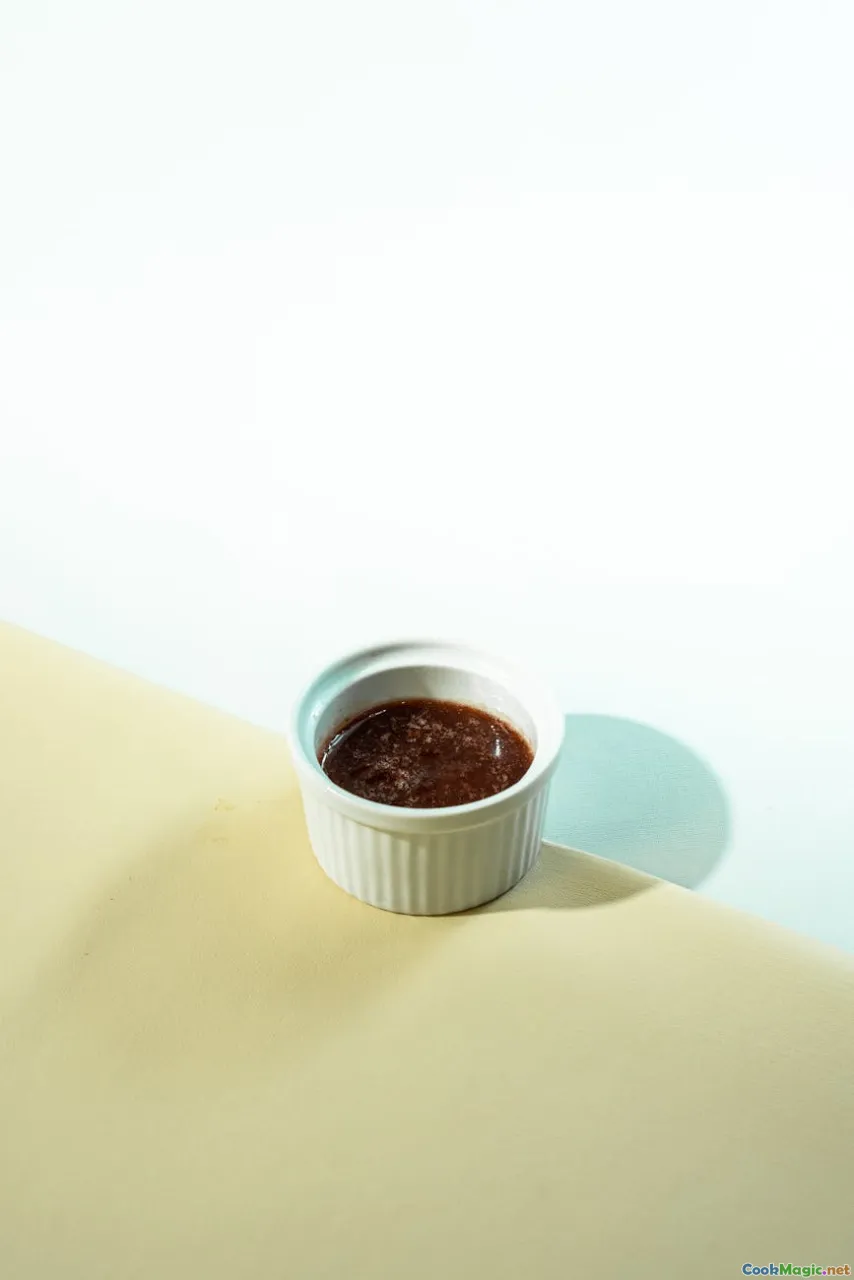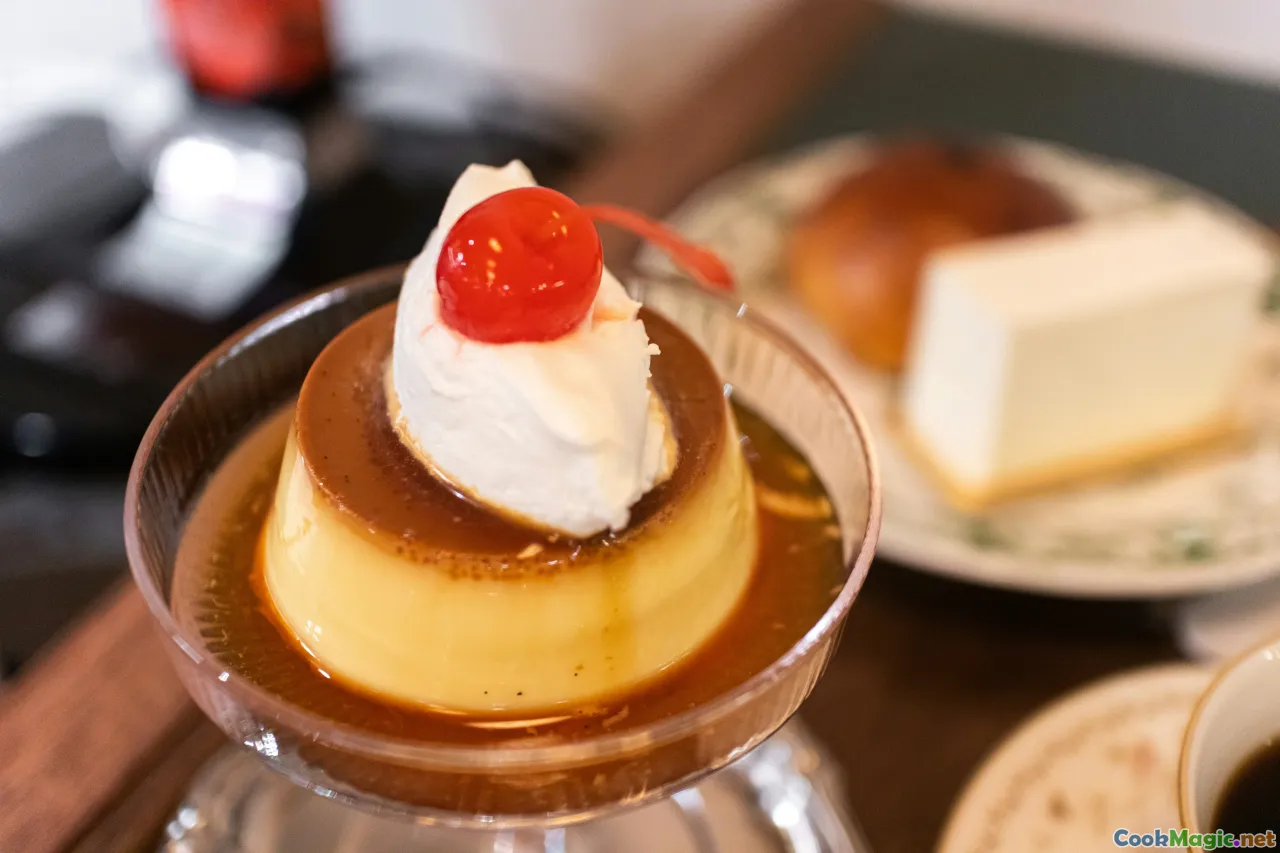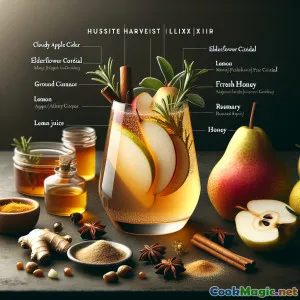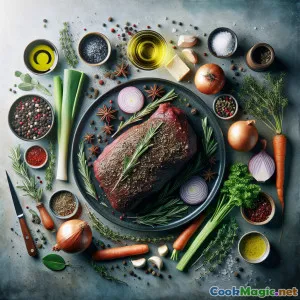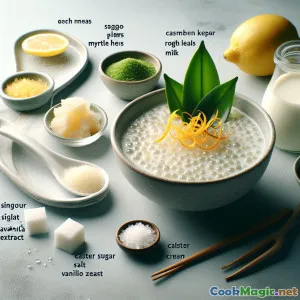
Délice de Sago Sucré à la Feuille de Myrte
(Myrtle Leaf Sweet Sago Delight)
(0 Avis)0
1,190
juillet 17, 2025
Signaler un problème
Ingrédients
-
100 grams Perles de Sago
(Alternative : petites perles de tapioca)
-
600 ml Lait
(Lait entier pour plus de crémeux, le lait végétal fonctionne aussi.)
-
5 leaves Feuilles de myrte
(Frais, le myrte anglais est préféré.)
-
60 grams Sucre semoule
(Ajuster au goût)
-
1/8 tsp Sel
(Accentue la douceur)
-
60 ml Crème liquide
(Versez en filet pour plus de richesse)
-
1 tsp Extrait de vanille
(Arrondit les saveurs)
-
1/2 tsp Zeste de citron
(Pour la garniture et la brillance)
(Alternative : petites perles de tapioca)
(Lait entier pour plus de crémeux, le lait végétal fonctionne aussi.)
(Frais, le myrte anglais est préféré.)
(Ajuster au goût)
(Accentue la douceur)
(Versez en filet pour plus de richesse)
(Arrondit les saveurs)
(Pour la garniture et la brillance)
Nutrition
- Portions: 4
- Taille de portion: 1 bol (180g)
- Calories: 245 kcal
- Carbohydrates: 44 g
- Protein: 6 g
- Fat: 6 g
- Fiber: 0.7 g
- Sugar: 19 g
- Sodium: 90 mg
- Cholesterol: 20 mg
- Calcium: 180 mg
- Iron: 0.2 mg
Instructions
-
1 - Infuser le lait avec de la myrte:
Chauffez le lait doucement à feu doux. Ajoutez des feuilles de myrte et laissez mijoter pendant 10 minutes ; ne laissez pas bouillir. Retirez du feu lorsque le lait est légèrement parfumé et jetez les feuilles.
-
2 - Préparer des perles de sago:
Rincez les perles de sagou à l'eau froide, en remuant pour éviter les grumeaux. Égouttez-les bien.
-
3 - Cuisez le sago dans du lait infusé au myrte:
Ajoutez les perles de sagou rincées au lait infusé. Faites cuire doucement à feu moyen-doux, en remuant constamment, jusqu'à ce que les perles deviennent translucides — environ 20 minutes.
-
4 - Sucrer et réhausser la saveur:
Ajoutez du sucre fin, du sel, extrait de vanille (si vous en utilisez) et remuez jusqu'à ce qu'il se dissolve. Ajustez la douceur à votre goût.
-
5 - Servir et Garnir:
Divisez le pudding en bols. Nappez-le de crème et saupoudrez de zeste de citron par-dessus. Servez chaud pour le réconfort ou froid pour vous rafraîchir.
Chauffez le lait doucement à feu doux. Ajoutez des feuilles de myrte et laissez mijoter pendant 10 minutes ; ne laissez pas bouillir. Retirez du feu lorsque le lait est légèrement parfumé et jetez les feuilles.
Rincez les perles de sagou à l'eau froide, en remuant pour éviter les grumeaux. Égouttez-les bien.
Ajoutez les perles de sagou rincées au lait infusé. Faites cuire doucement à feu moyen-doux, en remuant constamment, jusqu'à ce que les perles deviennent translucides — environ 20 minutes.
Ajoutez du sucre fin, du sel, extrait de vanille (si vous en utilisez) et remuez jusqu'à ce qu'il se dissolve. Ajustez la douceur à votre goût.
Divisez le pudding en bols. Nappez-le de crème et saupoudrez de zeste de citron par-dessus. Servez chaud pour le réconfort ou froid pour vous rafraîchir.
En savoir plus sur: Délice de Sago Sucré à la Feuille de Myrte
Myrtle Leaf Sweet Sago: The Unfolding Story and Sensory Experience
There is something whimsical and poetic about English cookery—especially when classic ingredients are interpreted through a unique, perhaps forgotten, botanical such as the myrtle leaf. 'Myrtle Leaf Sweet Sago' is an exploration into both nostalgia and novelty. It's rooted in the British love for creamy puddings, but gently uplifted by the delicate floral and camphoraceous notes of myrtle, a shrub that has graced English gardens for centuries but rarely appeared in modern cuisine.
Sago and Its British Place
Sago, a staple in Victorian-era English kitchens, comes from the pith of tropical palms but found enthusiastic adoption across northern Europe in the 1800s, especially for gently sweeted, custardy desserts. Originally perceived as both exotic and nutritious, its jelly-like appearance made it a favorite for textured puddings. The mystique of sago lies in its transformation: opaque, tasteless pearls that swell with the flavors of whatever they're paired with.
Why Myrtle?
Myrtle (Myrtus communis) is not only an evergreen symbol of love and peace in British wedding lore but also lends a nuanced aroma somewhere between eucalyptus and rose. Its restrained pine-and-lemon subtleties delicately scent the infused milk, evocative of dew-soaked mornings in English manor gardens. While mainstream British desserts typically turn to spices such as nutmeg or cinnamon, the use of fresh myrtle offers something distinctly memorable and, above all, uniquely English.
Technical Tips and Preparation Insights
- Infusing the Milk: The key to unlocking myrtle’s charm is understated infusion. Heating its leaves gently in milk extracts a mysterious but not overwhelming flavor. Don't boil, as high heat destroys the more volatile aromatic compounds—the flavors should hover, not assert.
- Don’t Rush the Sago: Stirring is essential—but gently! Never let the mixture catch on the pan, but don't whisk vigorously either. Sago pearls should transition to delicate sheerness without disintegration. It’s a meditative process: slow, patient, and reflective of English kitchen tradition.
- Customizing Texture & Taste: Vary the ratio of milk to sago for your ideal pudding density. Add more cream for luxurious mouthfeel, adjust warmth of flavors using more or less lemon zest.
Serving: Traditions and Adaptations
Serve warm for a proper English winter tea, swaddled in a tartan blanket, or chill overnight to accent warm-weather gatherings—its intrinsic delicacy makes it suitable for both. Cream (whether dairy or thick coconut, for a creative bend), brings further richness. Lemon zest, a nod to English kitchen gardens, brightens each bite.
A Few Cultural Notes
Though myrtle’s historical connotations are strong in the wedding world and in perfumery, its place on the plate has been nearly lost, overshadowed by more conventional dessert herbs. As such, this dish bridges past and present: crafted for a thoughtful gathering, an afternoon tea scattered with violets, or even as a talking piece at a modern English dinner party.
Personal Thoughts
'Myrtle Leaf Sweet Sago' emerged from the mingling of curiosity and reverence. I relish recipes where a simple ingredient—here, sago—serves as a gentle canvas for lyric flavors. Even those hesitant about floral notes find the subtlety here beguiling rather than overwhelming. I encourage you to celebrate the little-remembered, to let both memory and experiment join you at the table. After all, English cuisine’s real allure is ever in its innovations as much as its continuity.
In summary: This is a condensed taste of English countryside, both soothingly familiar and vividly unique. Try it when you wish for comfort, or when you wish to astound—either way, it’s a culinary letter sent straight from England’s fragrant hedgerows.

